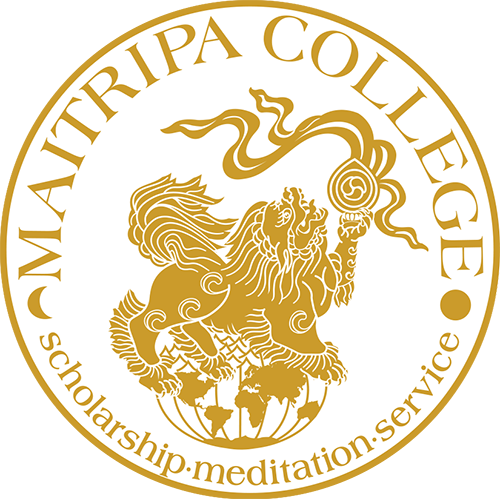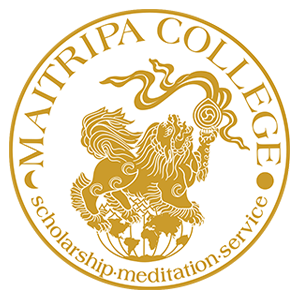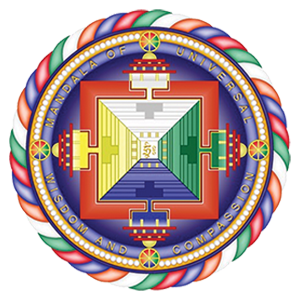by Bill Magee
This space will present The Word of the Month for those interested in fun facts about Sanskrit, Tibetan, and English words in Buddhism. As a translator, I deal with these words as commonplace every day, so it is good to step back now and then to reflect on their meaning and usage.
The first word we encounter is buddha. Buddha is a transliteration but not a translation of the Sanskrit, shown here in the Devanagari script (also used by modern day Hindi).
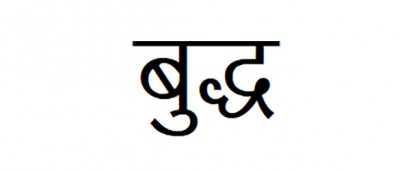
Buddha. The “u” should be pronounced like the “u” in “put” and the d sound is doubled and aspirated. Hint: the word is not pronounced “Booda.”
The word Buddha comes from the Sanskrit verb root budh, to awaken, or to know. Technically, “Buddha” is a past passive participle of budh. “The awakened one” is a good translation into English. An awakened one according to the Tibetan tradition is a normal being who has removed all afflictions and obstructions to omniscience and knows all phenomena, past, present, and future. Buddhas are endlessly compassionate and helpful. Although anyone can become a Buddha, certain Buddhas are prophesied in scripture. For instance, it is said that Maitreya Buddha will follow Shakyamuni Buddha, and so on. Buddhas emanate bodies and so forth to benefit beings, but in their ideal bodies they possess the 32 characteristic marks of a Great Being. These marks are also seen on the bodies of Wheel-Turning Kings. Becoming a Buddha is the ultimate goal of Mahayana Buddhism.
The Tibetan translation of the word “Buddha” is seen below in a standard Tibetan script called “headline” script. It is pronounced “sang-gyay.” Headline script is so-called because it possesses the vestigial remains of the prominent headline drawn over words in Sanskrit. In many ways the Tibetan script is reminiscent of the Devanagari. Each Word of the Month will be displayed in both Devanagari and Headline scripts. Tibetan has many words that do not originate in India, but most words involving Buddhism do.
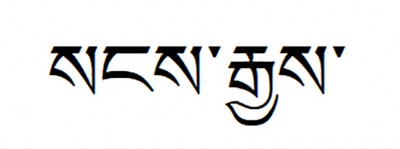
Tibetan translators adopted the meaning of Buddha—“the awakened one”—into a good Tibetan word. It is a two-syllable word phoneticized as “sang-gyay” but transliterated as “sangs rgyas.” (Note: If you would like to know why “sangs rgyas” is pronounced “sang-gyay”, it is kind of complicated, so please take my Tibetan class.🙂)
Like many two-syllable words in Tibetan, each syllable carries its own meaning, and each contributes to a third meaning that is the whole word. In the translation of Buddha, sangs means “awakened” and rgyas means “extensive.” Together they make a word meaning “awakened extensively” or perhaps “thoroughly awakened;” a form that also reminds one of the Sanskrit, samyaksambuddha, “completely awakened.” A lack of imagination may account for the fact that in English (as in most European languages) we almost always use Buddha, and not some translation equivalent such as The Awakened One.
Next month let us look at another word that we preserve in the original Sanskrit: bodhicitta.
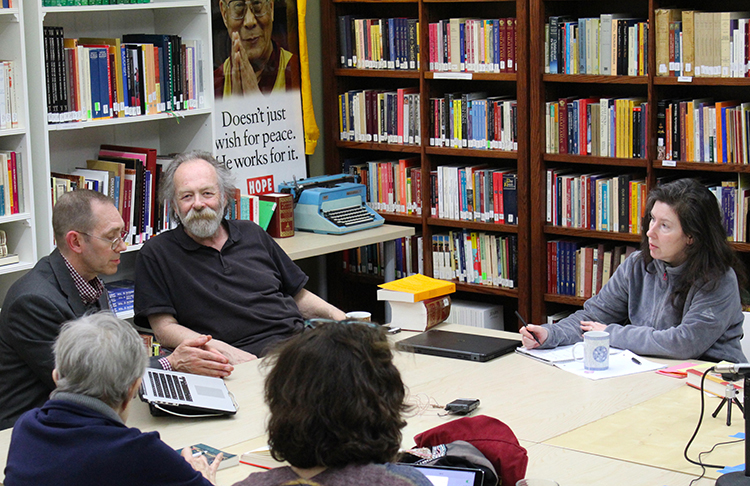
Maitripa College’s Dr. Bill Magee—trained by Jeffrey Hopkins at the renowned University of Virginia program—is one of world’s foremost teachers and translators of classical Tibetan language and Tibetan Buddhist texts.
